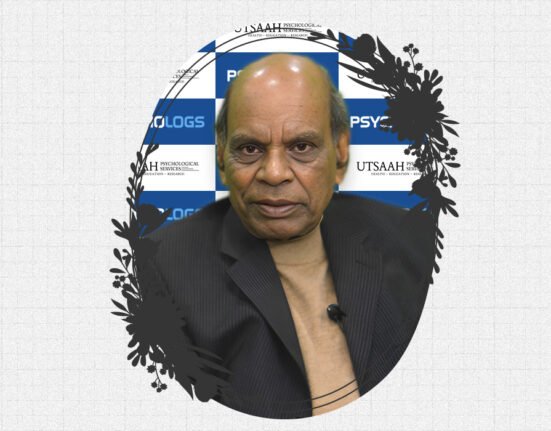In Himachal Pradesh, heavy rainfall has caused destruction on a never-before-seen scale. A number of important bridges were destroyed by the flash flood’s fury, and multi-story structures, particularly those near rivers, collapsed in an instant, seriously damaging the hill state over the previous 48 hours. In the previous 48 hours, the disaster in Himachal has claimed the lives of over 14 people, 54 people have died as a result of rain in total. According to CM Sukhu, landslides and property damage brought on by the rains have already claimed at least 14 lives. On Sunday, the state’s seven districts received a red alert from the Indian Meteorological Department (IMD).
Devastating Consequences
Thousands of people have been left stranded as a consequence of devastating floods in the rivers Beas, Satluj, Ravi, Chenab (Chandra Bhaga), and other overflowing tributaries like Uhl, Parvati, Tirthan, and Sainj due to extensive rains. Massive landslides on the National Highway, have put an end to life as passengers’ lives have been endangered by flying boulders and stones.
Due to extremely high silt levels, two significant hydropower projects on the Satluj River—Nathpa Jhakri (1500 MW) and Rampur (412 MW)—were forced to close. Floodwater also reached the Larji (126) MW) project. In the future, in addition to the weather that affected Himachal Pradesh, this may affect the availability of power in the northern region.
Impact on natural vegetation and Sacred sites:
Twelve additional bridges, including the iconic Aut bridge connecting the Banjar district of Kullu’s interior, were also destroyed. The potato fields of Manali and Gohar (Mandi), as well as Manikaran, a sacred site for Sikhs and Hindus, were also impacted by the intense flooding. Damage was also done to a crucial bridge at Koku-Nallah that connects Shimla with the apple-growing regions of Kotkhai and Rohru. The famed tourist resort of Manali was shut off entirely as a result of the nearby Kullu connecting road being completely washed away. Vehicles cannot currently go upward or downward from the Keylong or Rohtang tunnels (Atal tunnel). There are no water or electrical supplies in Kullu.
Aid from the Prime Minister
Prime Minister Narendra Modi also met with Chief Minister Sukhu to learn more about the situation and to offer the flood-affected state his complete support. Manali, Kullu, Kinnaur, and Chamba have suffered the worst damage as a result of the rain and flash floods. In addition to 785 water schemes being damaged, more than 850 roads have been obstructed or washed away.
According to the officials, this year’s rain has broken many records in Himachal Pradesh, but particularly the rainfall in Manali, Solan and Rohru broke all previous records. Natural Disasters like these can have a huge impact on the psychological, social and emotional health of people.
Disaster Psychology
Disaster psychology is the branch of psychology that deals with social and clinical solutions in calamity, emergency, and disaster circumstances. In a broader sense, it is the field of study that examines how individuals, groups, and communities behave under pressure. After a disaster, there may be persons with emotional trauma in addition to probable physical damage. Following a disaster or other traumatic experience, emotional instability, stress reactivity, anxiety, trauma, and other psychiatric symptoms are frequently seen.

Key aspects of disaster psychology
1) Trauma and stress reactions
Disasters frequently leave people touched with painful memories. A wide range of mental and physical emotions, including shock, fear, sadness, rage, and even post traumatic stress disorder (PTSD), may occur in people.
2) Psychological first aid
The goal of psychological first aid is to offer people instant support and consolation in the moments following a calamity. It entails meeting their fundamental needs, fostering safety and peace, actively listening, and connecting them with the right tools and services. It aids in calming down people and fostering their resilience. There are five steps that one can follow under psychological first aid –
- Safety , Stability , Comfort
- Information and practical help
- Socially connect
- Encourage coping
- Connect with help
3) Community Resilience
Disaster psychology acknowledges the value of a resilient community in dealing with calamities. Building community resilience entails fostering efficient communication, fostering stronger social relationships, and offering resources and support to those affected by the crisis.
4) Risk perception and preparedness
Disaster psychology requires an understanding of how people perceive and react to threats. People’s perceptions of dangers and preparedness activities can be shaped by factors like past experiences, cultural beliefs, and societal influences.
Six Emotional Phases of a Disaster
- Pre-disaster phase: Disasters that come without warning can make you feel helpless, out of control, and lose the power to defend your family and yourself.
- The phase of impact: Disasters that are slow and low-risk have different psychological consequences from those that are quick and dangerous. Shock to panic are all possible responses.
- Heroic phase: characterised by high activity levels and poor productivity levels. Community members engage in rescue behaviour that is fuelled by adrenaline. There is a sense of generosity. This stage frequently ends fast.
- Honeymoon phase: a sharp change in feeling. Assistance for disasters is easily accessible. Community bonds are formed. There is hope that everything will swiftly get back to normal. As a result, there are lots of chances for service providers and organisations to connect with and build rapport with impacted individuals and groups as well as with stakeholders. This stage could last several weeks.
- Disappointment phase: People and communities are aware of the limitations of disaster relief. As stress continues to have an impact, optimism changes to discouragement. Negative responses including physical tiredness or drug use start to emerge. Feelings of abandonment result from the disconnect between assistance and need. Months or even years may pass during this stage. Trigger events, such as the disaster anniversary, lengthen it.
- The phase of reconstruction: characterized by a general sense of healing. People adjust to a new normal while still grieving losses, and communities and individuals start to take ownership in rebuilding their lives. This stage frequently starts around the disaster’s anniversary and may go on after. After disasters, the reconstruction period could stretch for years.
Psychological health of survivors
1) Children:
Children’s behaviour might change and regress as a result of psychological disasters, and this can include sleep problems, school avoidance, and the emergence of phobias specific to that school.
2) Adults:
Adults may exhibit indifference, aggression, mood swings, suspicion, impatience, depressive or anxious feelings, and/or anger. The increasing level of stress may lead to an increase in the frequency of psychosomatic disorders as well as a worsening of pre-existing physical conditions including heart disease, diabetes, and ulcers. The event’s visual memories might be upsetting, and social disengagement is also frequently experienced.
3) Flight of thought:
Often trauma survivors experience flight of thought, which interferes with decision-making. They look in their minds for a way to help a trauma issue, but they can’t think of any. They hunt furiously on, feeling disorganised from their frenzied train of thinking.
4) Dysfunctionality:
Dysfunctional responses are amplified by trauma. When trauma occurs, a dysfunctional family or organization that has a history of anger spirals into rage. Their fury worsens the situation and prevents them from handling the crisis efficiently.
Coping strategies for disasters and traumatic events:
- Take care of yourself
- Reach out to friends and family
- Try to be optimistic and hopeful
- Get enough good sleep
- Establish and maintain a routine
- Take help from professionals
- Practice stress reduction techniques
- Spend more time with friends and family
In conclusion, disasters not only impair the quality of life but also place a heavy cost on both the person and the community in terms of mental health issues. Effective interventions should be delivered before, during, and after a disaster to lessen its negative consequences on mental health. Due to the incorporation of numerous efficient strategies, it is anticipated that clinical interventions involving psychosocial education would produce superior results. Plans for rehabilitation should be created with the requirements of the affected people in mind as well as the community’s cultural background. In order to better prepare the community to deal with disasters in the future.













Leave feedback about this